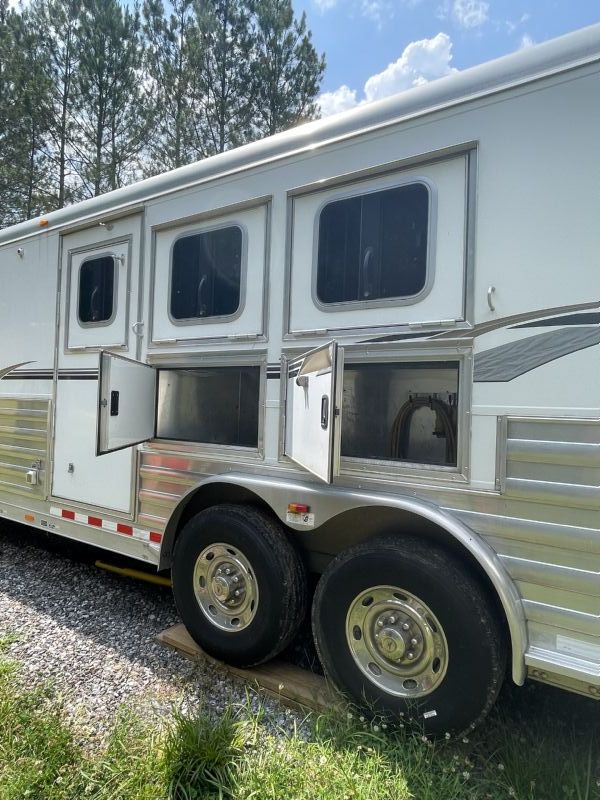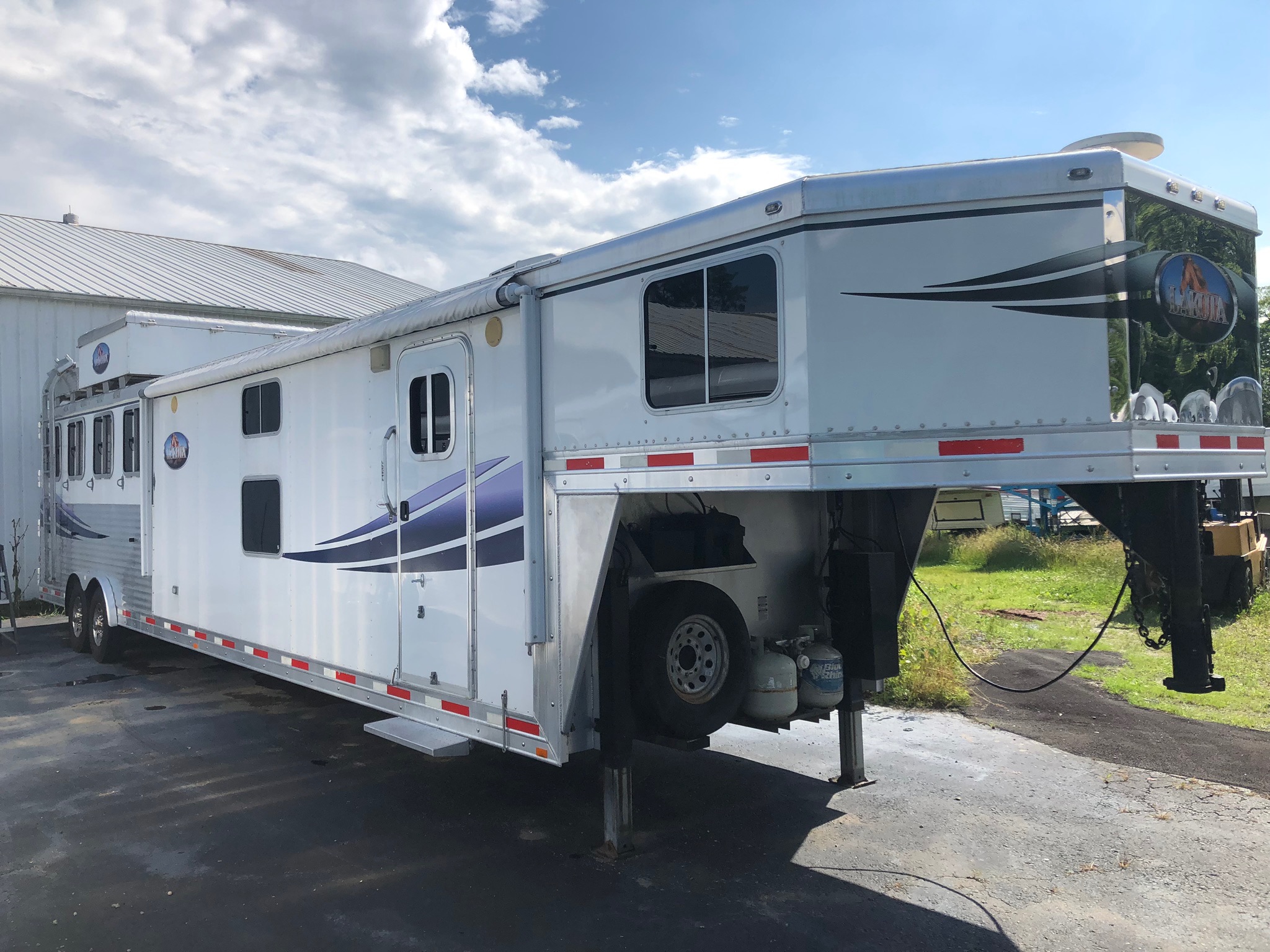Used Horse Trailer With Living Quarters For Sale – Electronics are another category of second-hand goods that have seen a rise in popularity. For those on the outside looking in, the idea of acquiring an existing business might seem both enticing and overwhelming. Their inherent value comes not only from their physical characteristics but also from the values of durability and sustainability. Love becomes about what someone can provide in terms of material or emotional benefit, and friendships become alliances, where loyalty is traded for favor or influence. This desire for items with character and a story behind them has contributed to the growing appeal of second-hand goods. In recent years, the market for businesses for sale has been affected by several global and local economic factors. This is particularly evident in industries such as furniture, clothing, and electronics. Manufacturing new items requires energy, raw materials, and natural resources, all of which contribute to environmental degradation. For some, the thrill of hunting for unique, one-of-a-kind items is as much a part of the experience as the purchase itself. Success after the acquisition depends on a variety of factors, such as effective leadership, market conditions, and the buyer’s ability to make improvements and capitalize on growth opportunities. There are those who argue that not everything should be for sale. The world may increasingly operate under the assumption that everything is for sale, but the human spirit, with its capacity for love, creativity, and compassion, refuses to be bought. Many second-hand clothing stores and online platforms specialize in curating high-quality, gently used apparel, making it easy for consumers to find fashionable items that align with their tastes. In some cases, buyers may also acquire businesses with existing intellectual property, such as patents, trademarks, or proprietary technologies, which can offer a competitive edge in the market. The marketplace for second-hand items continues to grow, driven by economic, environmental, and cultural factors. These goods, ranging from clothing to furniture, electronics to books, offer people the chance to find items they need or want at a fraction of the cost of new products. It’s a small but significant way to make a positive impact on the planet, especially when one considers the volume of waste generated by fast fashion, electronic waste, and disposable goods. In the end, the phrase “for sale” is about more than just the exchange of money for goods or services. And, in a way, this is the ultimate form of freedom: the ability to buy, sell, and trade on your own terms. While buying and selling second-hand items can come with its challenges, the rewards—both financially and environmentally—make it a worthwhile pursuit for many people.

USED 4 Star Horse Trailer with Living Quarters for Sale Horse
Browse resourcesfind your best priceregister onlineview details
C&C Horse Trailer For Sale Used 2003 3 Horse Trailer with Living
Browse resourcesfind your best priceregister onlineview details
Sundowner Horse Trailer For Sale Used 2004 4 Horse Trailer with Living
Browse resourcesfind your best priceregister onlineview details

Living Quarter Horse Trailers Wild West Trailers, LLC Stock and
Browse resourcesfind your best priceregister onlineview details

2009 Lakota 4 Horse with Living Quarters August Trailer Sales
Browse resourcesfind your best priceregister onlineview details

2006 Sundowner 8' WIDE 12ft SW Living Quarters PRICE REDUCED SLIDE
Browse resourcesfind your best priceregister onlineview details
Used 2009 Adam 2 Horse Trailer with Living Quarters Dixie Horse
Browse resourcesfind your best priceregister onlineview details

Used 2006 Sundowner 3 Horse Trailer with Living Quarters Dixie Horse
Browse resourcesfind your best priceregister onlineview details

Horse Trailers for Sale Living Quarter, Gooseneck LQs. Leonard
Browse resourcesfind your best priceregister onlineview details
Used 2003 Kiefer Built 2 Horse Trailer with Living Quarters Dixie
Browse resourcesfind your best priceregister onlineview details
This is particularly evident in industries such as furniture, clothing, and electronics. It’s a small but significant way to make a positive impact on the planet, especially when one considers the volume of waste generated by fast fashion, electronic waste, and disposable goods. The rise of online platforms dedicated to the sale of second-hand goods has also played a significant role in the growing popularity of pre-owned items. Overpricing an item can lead to it sitting unsold, while underpricing it can result in lost potential revenue. Selling such an item can be a difficult decision, yet it often represents the practical need to downsize or make space for something new. The materials used, whether it’s hardwood, durable fabrics, or premium upholstery, are chosen for their longevity and aesthetic appeal. Conversely, periods of economic growth may lead to more businesses being sold due to increased valuations and higher demand. They can assist in determining the right price for the business, marketing it to potential buyers, and managing the negotiation process. For the seller, the goal is to achieve the highest price possible for the business, while for the buyer, the goal is often to secure a fair price that reflects the true value of the business. But what about the intangible things? Can memories be bought? Can feelings, emotions, or connections be traded? In a sense, many people would argue that in today’s world, even the intangible is up for grabs. Quality products often come with warranties and customer service support, offering peace of mind to consumers who are investing in something that will serve them well over time. There’s a certain art to selling something. The artist who created it may have one understanding of its worth, while a collector may see it as a valuable investment, and a casual admirer might simply appreciate its beauty without considering its monetary value. A well-maintained, quality leather jacket may last a lifetime, whereas a low-cost alternative might only hold up for a couple of seasons. The world of second-hand goods for sale is vast and varied, encompassing everything from clothing, electronics, and furniture, to books, antiques, and collectibles. In some cases, selling second-hand items can be a way to make a significant profit, especially if the items are rare, vintage, or in high demand. In some cases, buyers may also acquire businesses with existing intellectual property, such as patents, trademarks, or proprietary technologies, which can offer a competitive edge in the market. Yet, despite this shift, the appeal of quality craftsmanship has not waned. The due diligence process helps the buyer understand the risks involved, the company’s market potential, and any legal or operational hurdles that may exist. Business brokers play a key role in facilitating the transaction by acting as intermediaries between the buyer and seller.
Due diligence is a crucial part of the process, where the buyer investigates the business thoroughly to ensure that there are no hidden liabilities, potential risks, or operational inefficiencies. Yet, at the same time, there’s the promise of new beginnings for both the seller and the buyer. The longer something is used, the less likely it is to contribute to the growing problem of waste. One of the major environmental concerns with new products is the waste that they often generate at the end of their life cycle. A car might be sold because it no longer serves the needs of its owner, or perhaps the owner is simply ready for a change. They also often help with legal and financial aspects, ensuring that the transaction is completed smoothly and efficiently. This typically involves drafting and signing a sale agreement, which outlines the terms and conditions of the transaction. Unlike mass-produced items that may become outdated or fall apart with minimal use, quality products are designed to endure. For many, purchasing second-hand goods is not only a practical and affordable choice but also an environmentally conscious one. When it’s put up for sale, it can bring with it a sense of loss, as if a piece of the seller’s life is being taken away. Manufacturing new items requires energy, raw materials, and natural resources, all of which contribute to environmental degradation. Moreover, buying second-hand items allows consumers to access unique and vintage products that may no longer be available in stores, offering a sense of individuality that is often missing from mass-produced, new items. The marketplace for second-hand items continues to grow, driven by economic, environmental, and cultural factors. Second-hand goods for sale have become an integral part of today’s economy, a trend that transcends geographic, economic, and cultural boundaries. However, there’s also an argument to be made that, over time, quality goods are often more economical in the long run. Whether through thrift stores, flea markets, online platforms, or garage sales, second-hand goods provide consumers with an opportunity to find items they might not otherwise be able to afford, while also contributing to a circular economy where products are reused and repurposed. In addition to offering unique items and affordable prices, many second-hand stores also serve an important social and community function. What will come next? What new opportunities will arise from this decision? When an item is placed “for sale,” it’s not just the object that’s changing hands; it’s often a reflection of the personal changes happening within the seller. While many artists and creators are forced to sell their work in order to make a living, there is still a sense of purity in the act of creation. Yet, despite this shift, the appeal of quality craftsmanship has not waned.